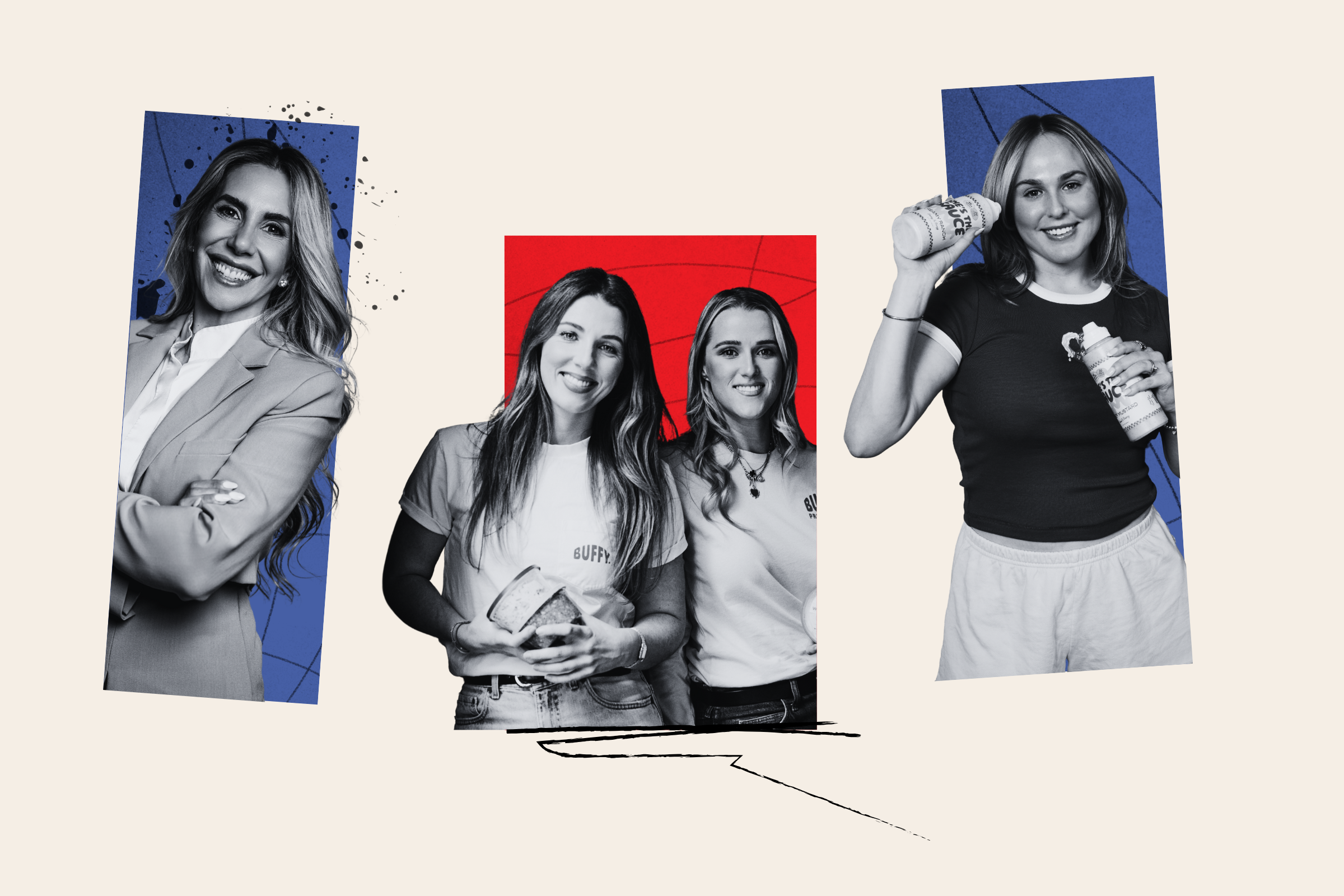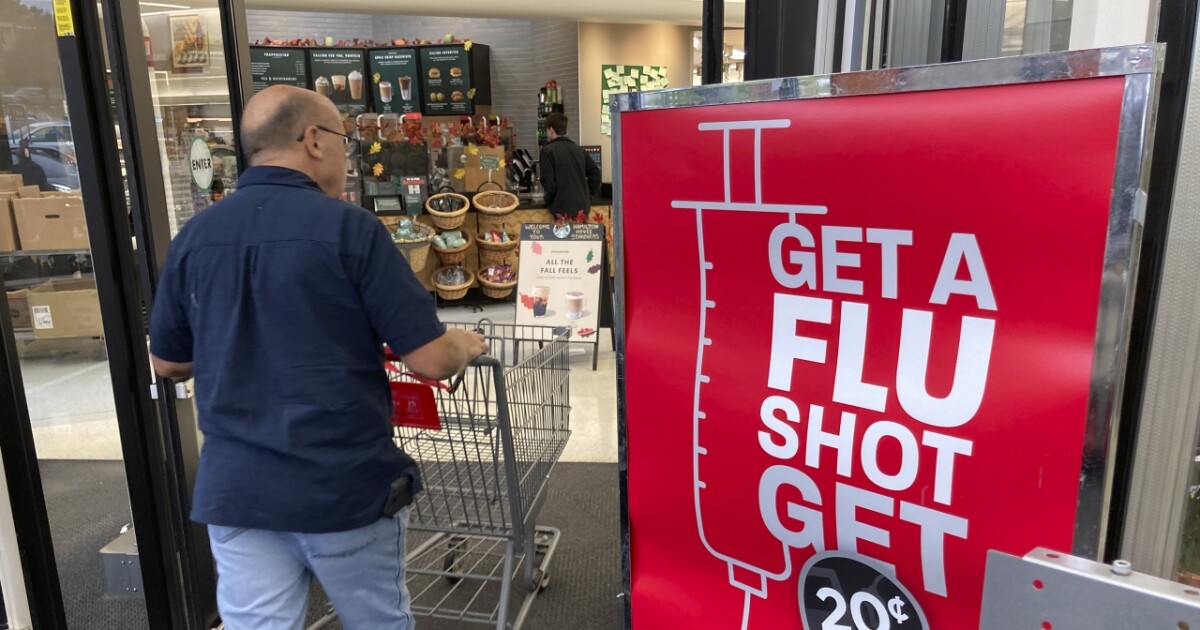
For as long as she can remember, Nicole Glabman has loved sauce. Her doctors, on the other hand, did not. They often cautioned her to use her condiments sparingly, suggesting that having high sugar levels would not help her polycystic ovary syndrome (PCOS).
“That pissed me off,” Glabman told Newsweek. “I’m not going to eat my meals without all the flavor.”
But rather than scale back, she took off on a quest to create a sauce where “the more you eat, the more benefits you get.” Glabman’s new creation – She’s the Sauce – contains four grams of protein and two grams of fiber in every serving.
Welcome to the protein revolution.
Say goodbye to the days of chalky shakes and mountains of steak, and hello to the age of brownies, ranch sauce and sparkling water. At a time when the nation’s appetite for protein seems insatiable, female entrepreneurs are showing Arnold Schwarzenegger-style bodybuilders the door.
“We’ve done a really good job of selling protein to men, to gym bros,” said Morgan Zanotti, co-founder of Primal Kitchen. “But women want protein too, and no one’s doing a good job of selling the protein to women.”
Last year, the global market for protein supplements grew to $28 billion. By 2030, it’s projected to reach $55 billion, according to Fortune Business Insights.
Investors want in, food giants too. Nestlé has a protein pizza, Chobani has a high-protein yogurt line. Fast food restaurants from Starbucks to Subway have buffed up their menus with protein cold foam and protein bowls.
Audrey Melville, co-founder of Buffy Protein Dips, told Newsweek, “People are just putting whey protein powder in anything and everything. I wouldn’t be surprised if soon it’s going to be in my hairspray and I could absorb it through osmosis or something.”
Buffy Protein Dips, however, is trying to leave whey in the past. Melville and company co-founder Emily Williams, both proponents of animal-based protein, created a protein-dense dip brand with free-range chicken because they see consumers “moving to the outer perimeter of the store.”
“People want fresh food,” Melville said. “Buffy is kind of ripe for the opportunity that we’re seeing now.”
Working with animal products has ushered in a whole new set of obstacles for the company, including the U.S. Department of Agriculture regulations, the need for refrigeration and potential food safety risks. And yet, Buffy remains on track to go to market by the end of November.
“I don’t think there’s a more studied macronutrient than protein,” Zanotti said. “It’s been the basis of every diet that’s existed. We’ve seen proteinification of food and industry-wise, there’s a lot of ‘Oh god, another protein product.’ But consumer-wise, look at Legendary Foods, they’re [doing] over $400 million [in sales annually].”
For the first time, women are outnumbering men when it comes to seeking higher protein intake. A September report released by data analytics firm Euromonitor International found that women now account for 51 percent of the consumers adding protein to their diets.
“Women are starting to really prioritize protein more than ever and it’s a missed opportunity,” Michelle Razavi, co-founder of protein-brownie and dessert-spread brand Elavi, told Newsweek. “Who better than women to market to women?”
Elavi’s protein brownies, which contain 11 grams of protein, sold out within three hours of launching. Then, Costco came knocking. And Whole Foods fast-tracked their brownies. “These were insane conversations that, for most emerging brands, take years,” Razavi said.
Razavi and her co-founder Nikki Elliot had a “slam dunk” on their hands, she said, and it was precisely because they weren’t the “traditional protein bar or protein shake, some weird-tasting muscle-bro product” that’s long dominated the shelves.
“It was this indulgent brownie that is nostalgic and really speaks to an emotional level of, ‘Oh, I want to have a sweet treat and feel good about it,'” Razavi said.
Zanotti, who sold Primal Kitchen to Kraft Heinz for $200 million in 2018, knows a thing or two about consumer packaged goods (CPGs). Over the last four years, she watched the protein trend unfold. In April of this year, she decided to pursue protein water. The concept had existed in other countries, but never really took off in the U.S. But the biggest reason it didn’t, in Zanotti’s view, was that no one was trying to “sell it to the moms.”
“We’re all just walking around, choking down cottage cheese with meat-stick breath, trying to figure out how we can get to our protein goal,” she said. “Wouldn’t it be great if one of these four LaCroix that I’m drinking every day was doing more for me?”
Waay, Zanotti’s sparkling protein drink, delivers 10 grams of protein for 45 calories. Starting in mid-October, Waay will appear on Whole Foods shelves nationwide.
Asked about the protein content in her new beverages, Zanotti called 10 grams “approachable.”
“I don’t need to work out to deserve 10 grams of protein. I can drink this more than once a day,” she said.
As protein bars seek to inject as much of the macronutrient into products as possible (the popular David protein bars feature the highest protein content on the market, with 28 grams), some have pushed back on the idea that women need that much protein.
TRUBAR protein bars, for example, contain just 12 grams of protein and up to 14 grams of fiber. When TRUBAR founder Erica Groussman first conceived of a protein bar geared to women, she was looking for was “something healthy, that tastes good and gives you that protein-fiber blend.”
“I knew that I didn’t want a protein bar that had 25 to 30 grams of protein just because that’s what we needed as women,” Groussman told Newsweek. “Women wanted [a product] that didn’t have so much protein that they felt like they were gagging.”
Groussman recognized that the guidance on protein has changed since she launched TRUBAR in 2018, and while she did tease a higher-protein product in the future, she insisted that TRUBARs “are never going to change.”
With more people turning to GLP-1 drugs like Ozempic, Mounjaro and Wegovy to treat obesity, doctors are recommending that patients up their protein intake to preserve muscle. Studies suggest that without adequate protein levels, up to 40 percent of weight loss on GLP-1s can come from losing lean mass. Patients using them are now advised to get up to 1.6 grams of protein per kilogram of body weight daily, which is double the standard recommended dietary allowance of 0.8 grams per kilogram.
“In the last eight months, protein has become this huge behemoth of a topic, especially in food and bev,” Glabman said. “Everyone is throwing protein in donuts and cookies and chips and seltzers. It obviously has a lot to do with the GLP-1 culture.”
Zanotti remembers when GLP-1s first started entering the mainstream conversation—mostly because of the massive rise in stock that Premier Protein saw in 2023.
“They attributed all of it to people on GLP-1s picking up Premier Protein from Costco. It was all of their growth and it was tremendous,” Zanotti said.
It’s what prompted her to “raise the red flag on GLP-1s” at Kraft Heinz, where she held a senior executive position after the Primal Kitchen acquisition.
“They were like, ‘No, that’s just for rich people,’ and I was like, ‘No… a freight train is coming for you,'” she recalled.
In 2023, Americans spent an estimated $71.1 billion on GLP-1 drugs, a 500 percent increase from 2018. Data from nonprofit FAIR Health also shows a 587 percent increase in GLP-1 prescriptions between 2019 and 2025.
With more people craving protein than ever, some entrepreneurs are delivering it straight up. In August, NEAP, a first-of-its-kind protein gel, went live. Much like the fast-digesting carbohydrate energy goos that runners and cyclists suck down when their bodies begin to fatigue, NEAP can be used on the go.
Sandra Yamada came up with the idea after running injuries took her off the road and she found herself in the gym, where she realized she wasn’t eating enough protein to build the muscle she was trying to. At the time, the solutions on the market tasted chalky and hurt her stomach.
“A light bulb turned on,” Yamada told Newsweek. “Why can’t I have the same efficiency, the same convenient form factor as the energy gels I would eat [when I was running], but protein?”
Energy gels have become a staple in the running community. Most marathoners consume one gel every 30 to 45 minutes after the first hour, or four to six gels over a four-hour race. Knowing those statistics, NEAP, with 20 grams of protein and 80 calories, might seem like the ultimate product for gym rats and fitness buffs. But Yamada sees those consumers as the “easy, low-hanging fruit.”
In an interview at Newsweek’s New York City headquarters, she said, “Those people have shakes and bars, and I’m not really trying to displace shakes and bars. Their pain point is a bit lower than someone who’s like, ‘My doctor keeps telling me I need more protein’ or ‘I’m an older woman looking for more protein.'”
It’s these remaining “pockets of proteinization” that Yamada is trying to hit: the non-athletes who are still health-conscious, the always-travelling corporate types, the hospital workers on late-night shifts, the moms running between their children’s extra-curriculars.
So far, the “busy, on-the-go female” has been NEAP’s “niche”, Yamada said. “They get it. They’re willing to eat something that has no sugar, that is really functional for the benefits and they’re realizing it works. They’re becoming our core customer.”
She acknowledged that the negative side of the so-called proteinization of food is that “everyone is sick of it.”
But she also believes that a rising tide lifts all boats. And Glabman agrees.
“I try not to get wrapped in the protein world of it all, but I do think it’s important because it builds out this category for us,” Glabman said. “These protein products are creating this new category in the market that people really want. Protein is here to stay. Your product just needs to taste good.”



